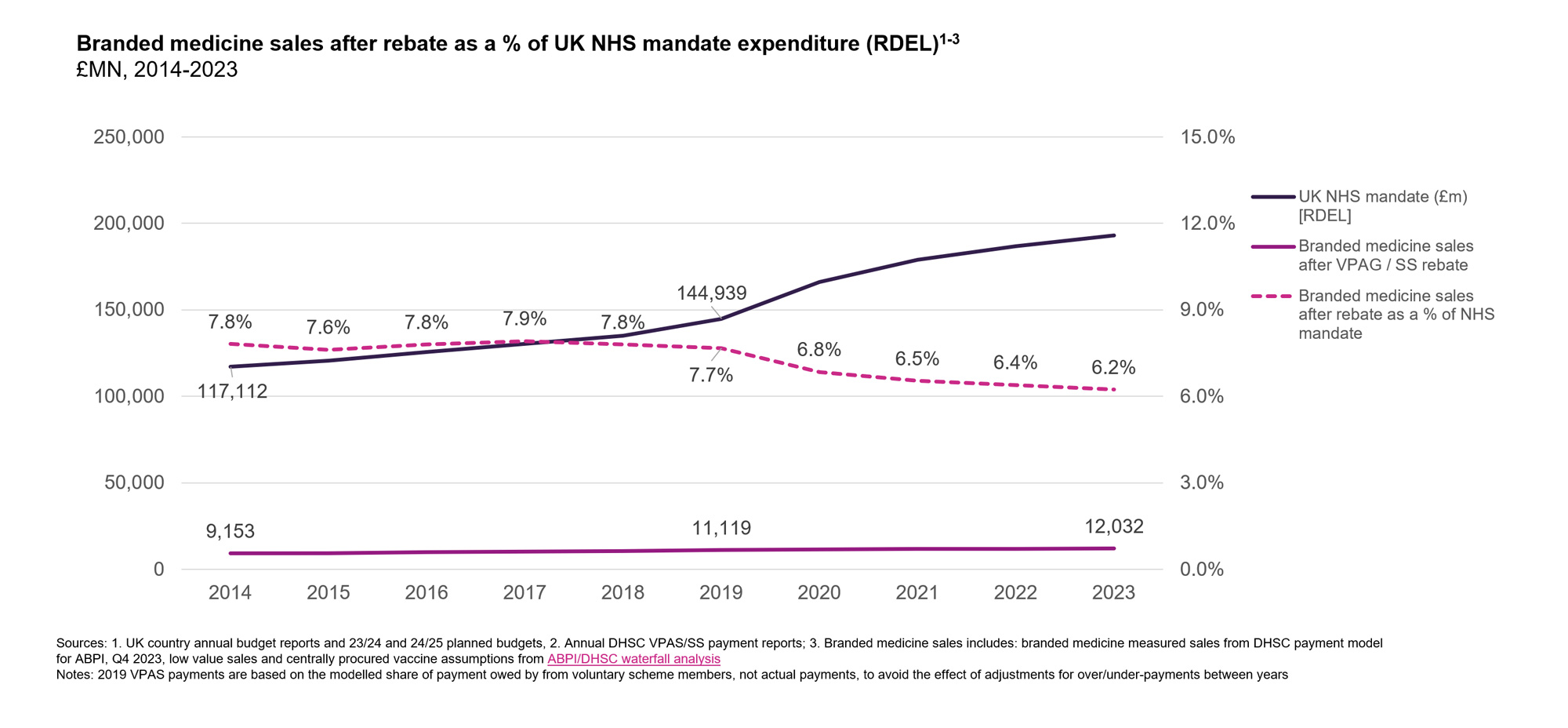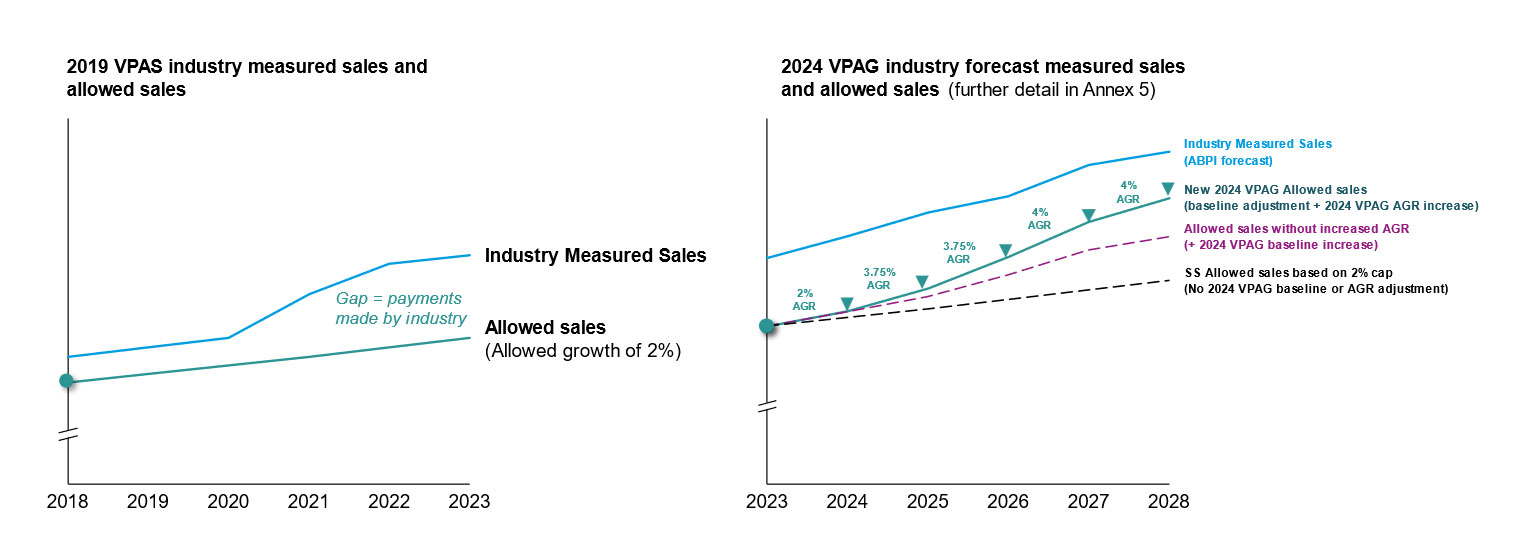Contributing to a financially sustainable NHS
A key element of the 2024 VPAG agreement is the financial commitment from industry, which supports the financial sustainability of the NHS's branded medicines spending. Simply put, the scheme aims to ensure the NHS doesn’t overspend its allocated branded medicine budget—even if it ends up using more medicines than budgeted for.
It does this through an ‘affordability’ mechanism, which, instead of determining prices directly, caps the amount spent on branded medicines based on a level of ‘allowed growth’. The current 2024 VPAG ’allowed growth level’ is 2% in 2024, increasing to 4% per annum by 2028. These allowed growth rates are fixed and do not consider inflation or any other unexpected factors that may arise during the scheme, such as a global pandemic. NHS spending above these levels is paid back as a rebate from the industry as a percentage of its sales to the NHS.
The affordability mechanism determines the size of rebate payments made by branded pharmaceutical companies on their NHS sales. The mechanism is highly complex, but we have attempted to set it out simply below.
The industry’s payments are made to DHSC and, subsequently, to NHSE and the devolved administrations based on their share of medicines sales. How these rebates are allocated is up to NHSE and the devolved administrations, and they are not necessarily returned to local NHS Health Boards and Trusts.
The affordability mechanism means that the amount the NHS spends on new branded medicines is controlled, with the industry bearing the cost of introducing newer medicines in the UK. This frees the NHS to use all the new medicines it needs to improve patient care, without the need to worry about additional cost implications.
How the affordability mechanism works
There are two main differences between the affordability mechanism in the current Voluntary Scheme (VPAG, 2024-2028) and the old Voluntary Scheme, called the Voluntary Scheme for branded medicines Pricing and Access or (VPAS, 2019-2023):
- The level of allowed growth in the branded medicine budget
- How company rebate payments are calculated
The level of allowed growth in the branded medicine budget
The level of ‘allowed growth’ sets out how much the government is willing to allow NHS branded medicines spending to grow over time. It is not linked to what medicines the NHS needs to use to give patients the best treatment; it is purely a budget constraint.
Under the 2014 and 2019 Voluntary Schemes, the ‘allowed growth’ rates required by the government led to the proportion of the total NHS budget spent on branded medicines falling. This was over a decade when the NHS was using more of these medicines, which in turn led to a large mismatch between ‘allowed spending’ and ‘actual spending’ on these medicines.
The gap between ‘allowed spending’ and ‘actual spending’ has increased by more and more each year. This has led to rapid and large increases to the rebates industry pays on their sales from year to year.
Branded medicine spend as a share of UK wide health spend

Following the 2008 financial crisis, the 2014 Voluntary Scheme, agreed by industry as a one-off austerity measure, allowed the branded medicine market to grow by just 1.1% per annum on average over five years. The 2019 VPAS saw this increase to 2% over the five years.
Allowed growth in the current 2024 VPAG starts at 2% but increases to 4% by the end of the five years. This is in addition to a series of ‘baseline’ adjustments which seek to partially, but not entirely, correct for the growing gap between the branded medicines allowed and actual spending.
Taken together, the 2024 VPAG should start to reverse the real-terms decline in branded medicine growth seen over the past ten years.

Background to the 2024 Voluntary Scheme on Pricing, Access and Growth (VPAG)
Last modified: 27 March 2025
Last reviewed: 27 March 2025